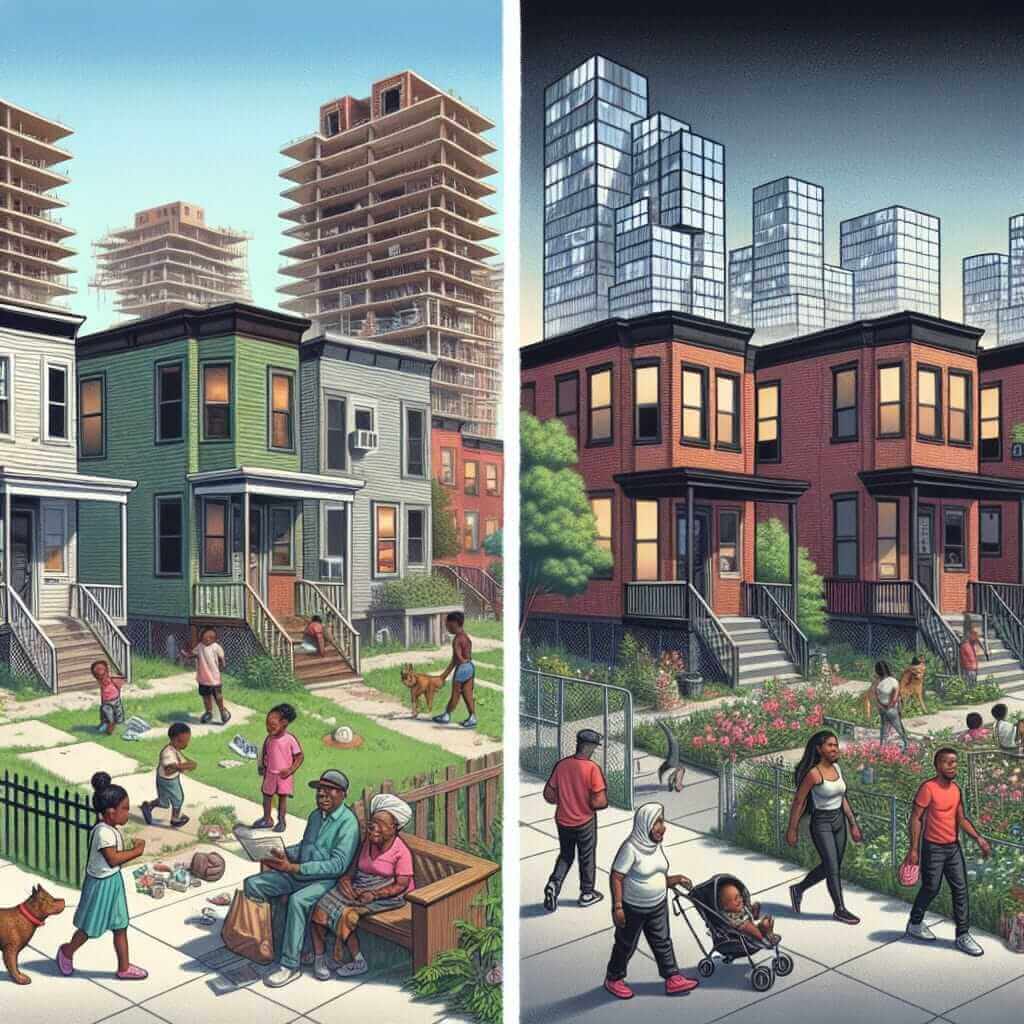Urban redevelopment, while often seen as a positive force for economic growth and urban renewal, can significantly impact housing affordability. This topic frequently appears in IELTS Writing Task 2, requiring test-takers to analyze the multifaceted relationship between urban redevelopment projects and the cost of housing.
Here are some potential essay prompts related to this topic:
- To what extent do you agree or disagree with the view that urban redevelopment projects often lead to a decrease in affordable housing options?
- Discuss the advantages and disadvantages of urban redevelopment in relation to housing affordability.
- What measures can governments take to mitigate the negative impacts of urban redevelopment on housing affordability?
Sample Essay: Urban Redevelopment and Housing Affordability
Prompt: Discuss the advantages and disadvantages of urban redevelopment in relation to housing affordability.
Analysis:
This prompt requires a balanced discussion outlining both the positive and negative effects of urban redevelopment on the affordability of housing. You should aim to provide specific examples and evidence to support your points.
Model Essay:
Urban redevelopment, the process of revitalizing decaying urban areas, is a complex issue with profound implications for housing affordability. While it can offer numerous advantages, it also presents significant challenges that need to be carefully addressed.
On the one hand, urban redevelopment can enhance housing affordability by increasing the overall supply of housing units. By transforming dilapidated buildings and underutilized land, these projects can create new apartments, condos, and mixed-income housing developments. This influx of new housing can help alleviate housing shortages and potentially stabilize or even reduce rental and purchase costs, particularly in high-demand areas. Moreover, redevelopment initiatives often involve partnerships between city governments and private developers, leading to the construction of affordable housing units being mandated as part of the project. This ensures that a portion of the new housing stock is accessible to low- and moderate-income households.

However, urban redevelopment can also exacerbate housing affordability challenges, primarily through the process of gentrification. As neighborhoods undergo revitalization, property values and rents tend to rise, displacing long-term residents and businesses who can no longer afford the increased costs. The replacement of affordable housing units with luxury apartments or condominiums further shrinks the availability of affordable housing options, pushing lower-income residents further away from city centers and employment opportunities. This displacement can lead to social fragmentation and exacerbate economic inequality within urban areas.
In conclusion, urban redevelopment represents a double-edged sword for housing affordability. While it can stimulate housing development and provide opportunities for affordable housing construction, it can also drive up housing costs and displace vulnerable populations through gentrification. Therefore, it is crucial for city planners and policymakers to adopt a balanced approach, implementing measures to mitigate the negative impacts of redevelopment and ensure that the benefits of urban revitalization are accessible to all residents, regardless of income level. (Word count: 288)
Writing Tips:
- Clearly define “urban redevelopment” and “housing affordability”: Provide concise definitions to establish a clear understanding of these key terms for the examiner.
- Use a balanced approach: Acknowledge both the advantages and disadvantages of urban redevelopment.
- Provide specific examples: Illustrate your points with real-world examples of cities where urban redevelopment has either improved or worsened housing affordability.
- Use topic-specific vocabulary: Incorporate words and phrases such as “gentrification,” “displacement,” “affordable housing units,” and “mixed-income housing.”
- Maintain a formal tone: Use academic language and avoid colloquialisms or slang.
Vocabulary:
- Revitalization (noun) /riːˌvaɪtəlaɪˈzeɪʃən/: the process of making something grow, develop, or become successful again.
- Dilapidated (adjective) /dɪˈlæpɪdeɪtɪd/: old and in poor condition.
- Alleviate (verb) /əˈliːvieɪt/: to make something bad such as pain or problems less severe.
- Exacerbate (verb) /ɪɡˈzæsə(r)beɪt/: to make something that is already bad even worse.
- Gentrification (noun) /ˌdʒɛntrɪfɪˈkeɪʃən/: the process of renovating and improving a house or district so that it conforms to middle-class taste.
Conclusion
The impact of urban redevelopment on housing affordability is a complex issue with both positive and negative implications. By understanding the key arguments and using precise vocabulary, you can craft a well-structured and insightful IELTS essay on this topic. Remember to practice writing essays on similar themes to improve your writing skills and enhance your chances of achieving a high band score. Other related topics you might encounter include the role of government in providing affordable housing, the impact of tourism on housing prices, and the challenges of urbanization in developing countries.